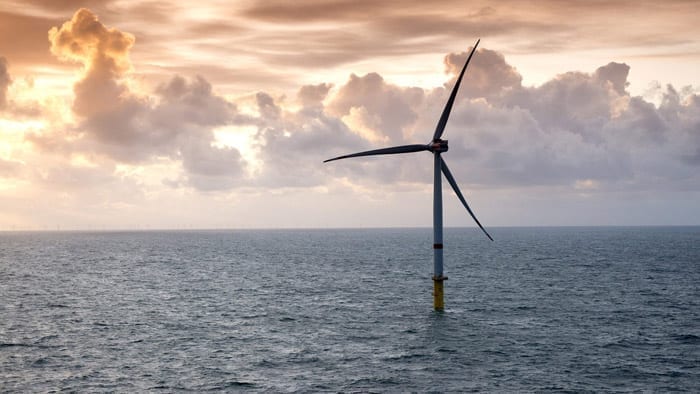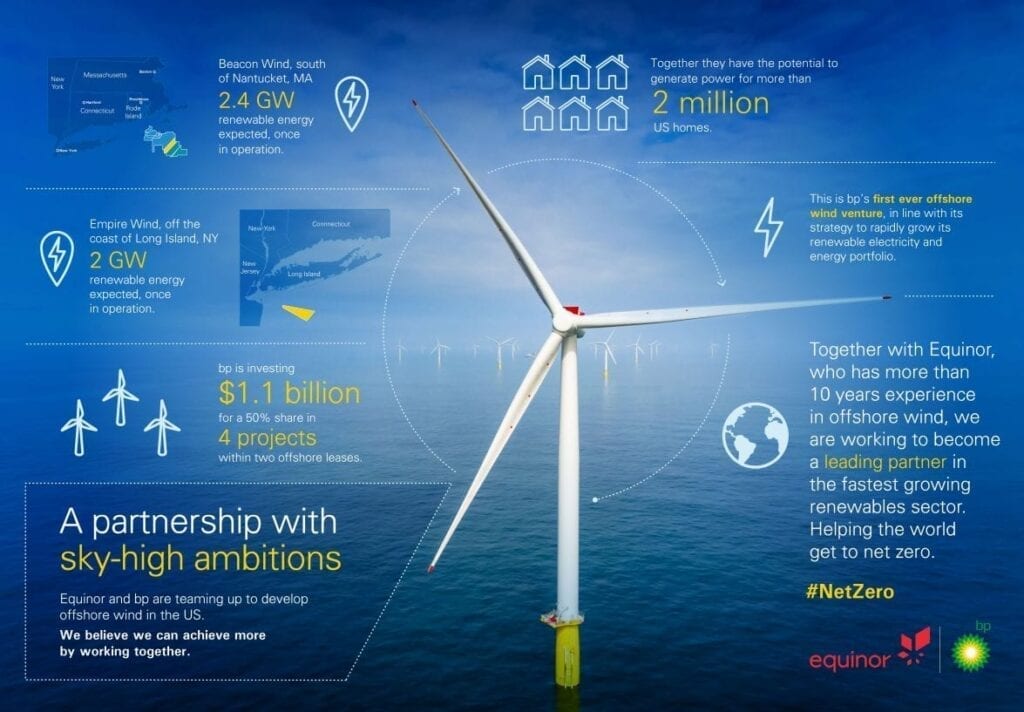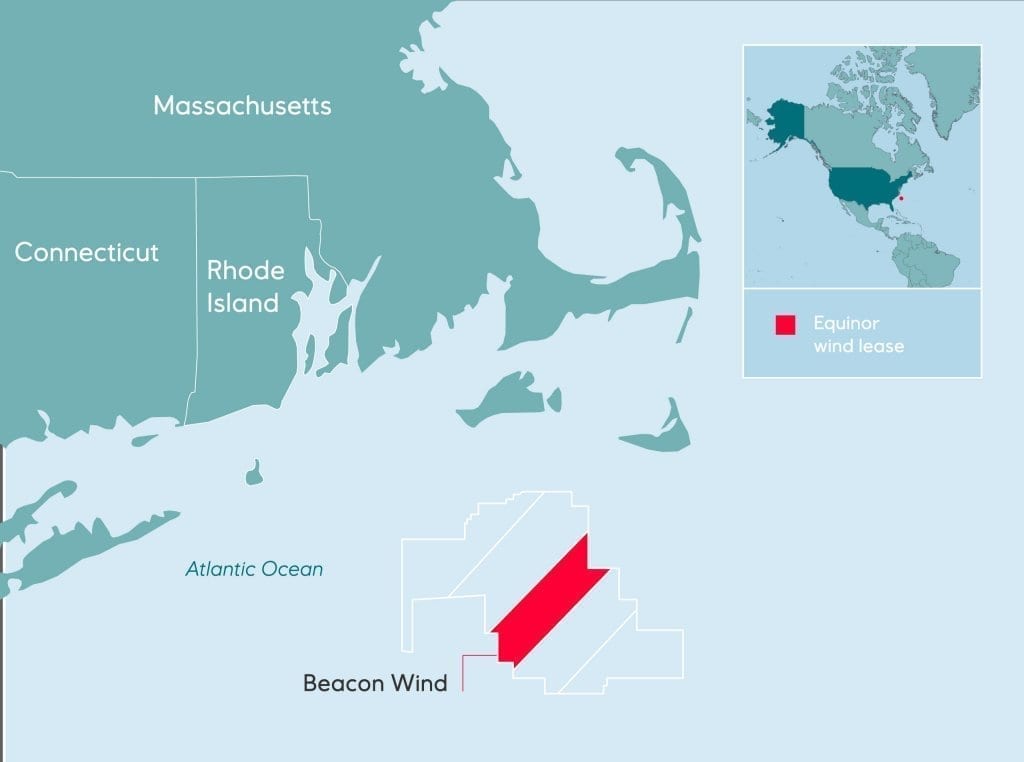The post BP Buying $ 1.1 Billion Stake in U.S. Offshore Wind appeared first on POWER Magazine.

The move by major oil and gas exploration companies into renewable energy has taken another significant step, as BP announced a $ 1.1 billion deal to buy the U.S. offshore wind power assets of Norway’s Equinor.
BP in announcing the deal on Sept. 10 said it is taking a 50% stake in Equinor’s Empire Wind project off New York, and a similar position in Equinor’s Beacon Wind development off Massachusetts (Figure 1). Equinor will continue to hold a half-interest in both projects and will remain the operator. The deal is expected to close in early 2021.
Bernard Looney, CEO of the British energy giant, in August said BP would cut its oil and gas output by 40% over the next 10 years, while spending as much as $ 5 billion annually to build its renewable energy business, as the company pivots from fossil fuel development. BP has a goal of 50 GW of renewables generation capacity from wind, solar, and hydropower by 2030. The company today has about 2.5 GW of renewable energy in its portfolio.

“This is an important early step in the delivery of our new strategy and pivot to truly becoming an integrated energy company,” Looney said in a statement Thursday. “It’s a partnership with the world’s leading offshore wind developer in the world’s fastest-growing market.”
“We look forward to working with BP who share our strong ambition to grow in renewable energy. Our partnership underlines both companies’ strong commitment to accelerate the energy transition and combining our strengths will enable us to grow a profitable offshore wind business together in the U.S.,” said Equinor CEO Eldar Saetre.
Empire Wind’s current construction timeline has the first phase of the project—with potential installed capacity of more than 2 GW—coming online in 2024-25. Equinor has estimated its investment in the project’s initial phase at about $ 3 billion.
The Beacon Wind project (Figure 2) is being designed with generation capacity of more than 2.4 GW. The companies on Thursday said they plan to collaborate on additional U.S. offshore wind projects, as more states move to support the technology.

Dev Sanyal, executive vice president for gas and low-carbon energy at BP, told Bloomberg, “Our ambition would be to replicate this across the U.S. States are going through their own process of looking at the offshore wind sector, and as offshore leases come available, both of us would like to be a part of that.”
Long-Term Strategy
Equinor in a statement said the sale of its assets to BP is part of its long-term strategy “to access attractive acreage early and at scale, mature projects, and capture value by de-risking high equity ownership positions.”
The companies also said they see potential to collaborate on U.S. offshore wind projects that could total at least 600 GW of capacity and perhaps as much as 800 GW by 2050, noting those installations could include both fixed-bottom and floating projects.
John Miller, ESG senior research analyst with Calvert Research and Management, told POWER that “the barriers to entry within the offshore wind development space are high,” which will drive partnerships among larger companies with the capital to support such projects. “This has attracted a core group of specialized developers, along with large-cap utilities, and a handful of oil and gas majors who are seeking to diversify their business operations,” Miller said. “These firms are global in orientation, and use their experience in offshore operations and supply chain efficiencies to produce comfortable project IRRs [internal rates of return].”
Equinor, which was known as Statoil until the company rebranded in 2018, began as an offshore oil and gas developer in the 1970s but has now pivoted toward renewables, utilizing its expertise in offshore industrial installations to develop wind projects.
Analysts: Acquisitions Key to Rapid Growth
Analysts who have studied the trend of oil and gas companies moving into renewable energy say acquisitions are likely the quickest way for those groups to invest in the sector, since large-scale projects—particularly offshore wind—can take years to develop and come with high construction costs. Iberdrola’s 3.1-GW East Anglia wind project off the UK coast is expected to cost about $ 8 billion. SSE and Total’s 1.1-GW Seagreen 1 British offshore wind project is projected to cost about $ 3.7 billion.
Mike Williams, deputy director of the BlueGreen Alliance, told POWER that developers of offshore wind projects all “have sizable backing, most [of it] out of the oil and gas industry. Building out projects for them, that’s how they see their projects going forward. Offshore wind is such as capital-intensive effort, I couldn’t imagine a small startup participating, and that’s where you see the oil and gas folks coming in. They have the human infrastructure and the financial infrastructure.”
Economics Batter Oil and Gas Majors
BP has debt of about $ 41 billion, and the company’s market value has fallen below $ 80 billion due to falling prices for oil and natural gas. Oil and gas majors have been hit hard as investors increasingly move away from fossil fuels and toward renewable energy.
Offshore wind developers, meanwhile, have seen their business grow. Spain’s Iberdrola, which already has 33 GW of installed renewable power capacity and has several projects under development, has seen its share price rise nearly 80% over the past two years, with its market value rising to about $ 80 billion.
Shares in Denmark’s Orsted, which is one of the world’s largest developers of offshore wind, have gained more than 130% over the past two years as the company’s market value has soared to about $ 60 billion. Orsted has about 10 GW of installed global wind power capacity, with commitments for about another 4 GW in the near term.
Oil and gas companies also see renewables, including offshore wind, as an entry point into other emerging technologies in the power sector. Anthony Bond, president of BOND Civil & Utility Construction, which focuses on energy-related projects, recently told POWER that technological advances will help drive the U.S. and global offshore wind market.
“The two biggest technological advances that are out there are the increasing output of the turbines, which continue to jump significantly every couple years, as well as ‘green hydrogen’ development,” Bond said. “The increase in turbine output allows for existing and newer projects to limit their footprint and environmental impact while also allowing greater generation at a more effective price point. Green hydrogen is a potential new business line that would further enhance the viability and longevity of the offshore wind market for the U.S. and other countries.”
—Darrell Proctor is associate editor for POWER (@DarrellProctor1, @POWERmagazine).
The post BP Buying $ 1.1 Billion Stake in U.S. Offshore Wind appeared first on POWER Magazine.